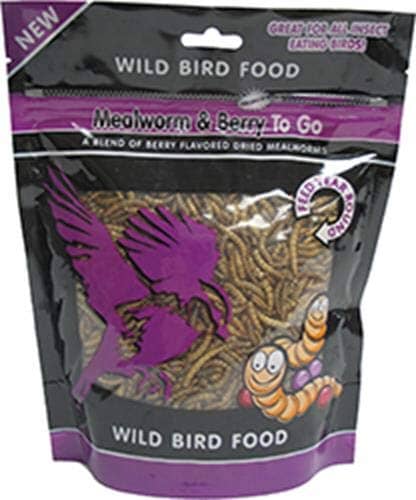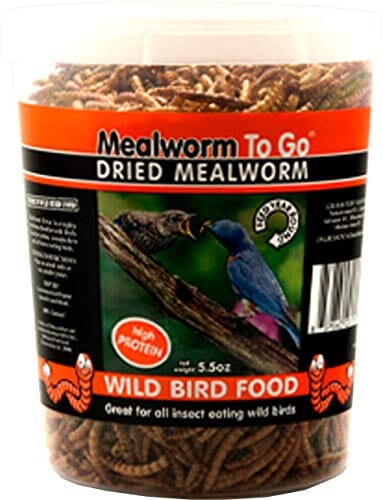Mealworm To Go
Mealworm To Go Wild Bird Food Wild Bird Food - Berry - 3.52 Oz
- Sale price
- $4.50
- Regular price
- $5.41
Mealworm To Go Dried Mealworms Wild Bird Food - 5.5 Oz
- Sale price
- $9.96
- Regular price
- $11.95
Mealworm brand sells Wild Bird Food. The Wild Bird Food is a Nutritious and Sustainable Option for Wild Birds.
However, traditional food sources like meat and dairy products have significant environmental impacts, including greenhouse gas emissions and land degradation. Mealworms are an insect gaining attention as a sustainable and nutritious snack for wild birds.
What are Mealworms?
Mealworms are native to Europe, but now they are found worldwide. Mealworms are commonly used as a food source for reptiles, birds, and fish but are also edible for humans. They have protein, vitamins, and minerals, making them a healthy alternative to traditional protein sources.
Nutritional Benefits of Mealworms for Birds
Mealworms are a rich source of protein, containing up to 50% protein by dry weight. This makes them an excellent source of protein for birds, especially during the breeding season when they need extra protein to produce eggs and feed their young. They also contain all essential amino acids for building and repairing body tissues.
Mealworms are also a good source of vitamins and minerals for birds. They are particularly rich in vitamin B12, which is important for the nervous system and the production of red blood cells. They also contain vitamin A, which is important for vision, immune function, and skin health. Additionally, mealworms contain minerals like iron, calcium, and zinc, which are important for overall health.
Sustainability Benefits of Mealworms as Bird Food
Mealworms have significant sustainability benefits compared to traditional bird food sources like beef or pork. For example, producing one pound of mealworms requires only 1.7% of the land, 4.4% of the feed, and 0.3% of the water required to produce one pound of beef. They also produce fewer greenhouse gas emissions and waste products.
How to Offer Mealworms to Wild Birds
Offering mealworms to wild birds is easy. One option is to place the mealworms on a flat surface, such as a tray or platform feeder. This method is particularly effective for attracting ground-feeding birds like robins and thrushes.
Another option is to offer mealworms in a hanging feeder. Various hanging feeders are available on the market, ranging from simple wire mesh feeders to more elaborate models with multiple feeding ports. Hanging feeders are particularly effective for attracting tree-dwelling birds like tits and finches.
Finally, mealworms can be offered in a mixed seed or suet-based bird food blend. This method is particularly effective for attracting a wide variety of bird species, as the mealworms are mixed with other bird foods that appeal to different species.
Tips for Offering Mealworms to Wild Birds
When offering mealworms to wild birds, there are a few ways you can feed the birds to ensure that the birds can safely and easily consume the mealworms:
- Use fresh, high-quality mealworms. Mealworms that are old or have been exposed to high temperatures may be less nutritious and more likely to spoil.
- Offer mealworms in moderation. While mealworms are a nutritious food source, they should be offered in moderation to prevent birds from becoming overly reliant.














